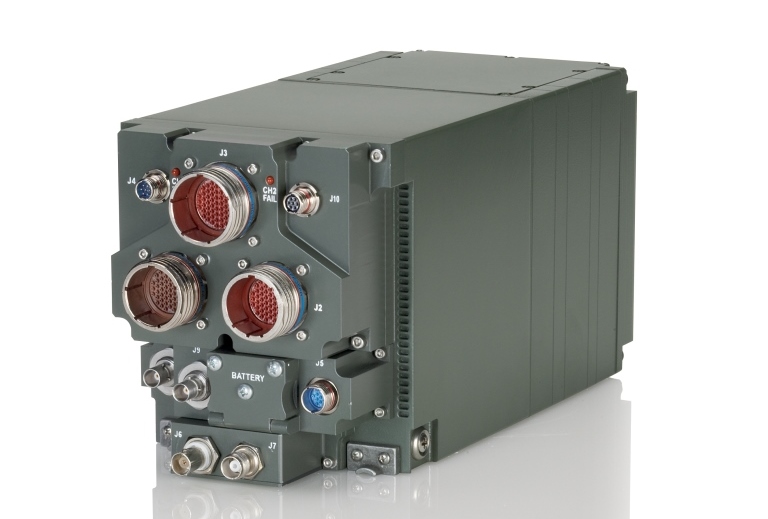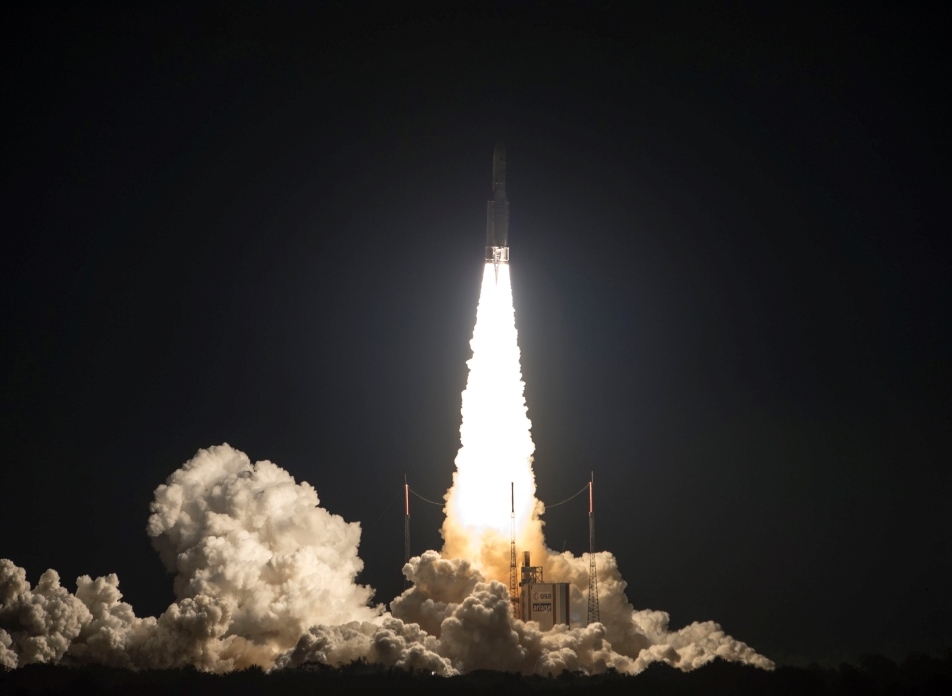COVER STORY - VIASAT
BY JAMES CARELESS
VIASAT
PROVIDING RELIABLE TACTICAL COMMUNICATIONS
TO THE CANADIAN ARMED FORCES
 The ongoing trend toward networked warfighting means that reliable tactical communications have become more vital than ever before. This is why the Canadian Armed Forces depends on trusted equipment suppliers like Viasat to meet its advanced communications needs in the air, on the ground, and at sea.
The ongoing trend toward networked warfighting means that reliable tactical communications have become more vital than ever before. This is why the Canadian Armed Forces depends on trusted equipment suppliers like Viasat to meet its advanced communications needs in the air, on the ground, and at sea.
“Through a unique culture of innovation, technology leadership, agile development processes and flexible business models, Viasat has been a provider of air-to-ground systems to CAF/DND for over 15 years, providing much needed augmentation to their current suites,” said Ken Peterman, President of Viasat’s Government Systems division.
KNOWN FOR LINK 16
In the defence arena, Viasat is known for its Link 16 military tactical data link (TDL) network used by NATO countries and coalition partners, which allows military aircraft, ships and ground forces to exchange their tactical pictures in near-real time.
In general, Link 16 systems provide 360-degree situational awareness on the battlefield. Over 15,000 Link 16 terminals have been built since being developed in the 1970s and were first operationally deployed by the U.S. military in the 1980s.
That’s why the company is drawing on its 30-plus year history in Link 16 tactical data links (TDLs) to provide seamless communications for a complete line-of-sight and beyond-visual-line-of-sight (BVLOS) system/relay within an area of operation. For example, Viasat’s Move Out/Jump Off (MOJO) transportable communications gateway supports the exfiltration of Link 16 Situational Awareness (SA) and Command and Control (C2) to deliver an integrated common operational picture.”
In Canada, the RCAF uses the Viasat KOR-24A Small Tactical Terminal (STT) on its CP140 (Aurora) aircraft for global airborne surveillance and C4ISR (Command, Control, Communications, Computers, Intelligence, Surveillance, and Reconnaissance) missions. The STT allows the CP140 to stay constantly connected to the Link 16 network for tactical information while supporting voice and data communications on a second channel. These terminals are fully interoperable with other Link 16 terminals that are deployed on CF-18 Hornets, Halifax class frigates, and Link 16 fixed/mobile stations. The STT is a critical component contributing to seamless Link 16 tactical communications across the U.S and coalition forces that includes at least 12 nations and three arms of the Canadian Armed Forces leveraging the small form factor terminal.
CANADIAN PARTNERSHIPS
Viasat understands the importance of leveraging a dedicated and skilled Canadian workforce to meet the critical communications needs of the Canadian Armed Forces. For example, in partnership with MDA, Viasat is helping the Army modernize its computer suite and data link radios, with the goal of improving networked voice and communications across the entire CAF. Viasat’s STT is a key enabler for the Canadian Army’s ground operations as part of DND’s Airspace Coordination Centre Modernization (ASCCM) project.
The STT is the world’s only multichannel, software-upgradable radio that can support Link 16 communications in a small form factor. Using the STT, warfighters on the ground, air and sea can now have simultaneous access to Link 16 and other wideband UHF or legacy VHF/ UHF radio systems. The flexibility of Viasat’s architectures also allow for adding in new advanced Link 16 capabilities to not only address emerging mission requirements, but maintaining a tactical edge across today’s battlespace. For example, the STT recently achieved Link 16 Cryptographic Modernization (Crypto Mod) capability, ahead of the U.S. Government mandate, to help ensure warfighters have assured access to mission-critical information when using Link 16 communications. Last year the company also took a proactive approach and implemented Concurrent Multiple Reception capabilities to further enhance Link 16 communications and reduce network congestion.
As well, Viasat and MDA have opened a Link 16 repair, maintenance and upgrade service facility in Richmond, BC. It offers crypto modernization, software upgrades, and retrofits to Multifunctional Information Distribution System Low Volume Terminal (MIDS-LVT) Block Upgrade 2 devices for Halifax class frigates and other Link-16 enabled platforms.
Viasat also has an ongoing partnership with Ontario-based Telesat, which goes back to 2011 when Telesat concluded an agreement with Loral Space & Communications Inc. to acquire the Canadian payload of the ViaSat-1 satellite. ViaSat-1 (launched 2011) has a total transmission capacity of 140 Gbps-plus, while ViaSat-2 (launched 2017) provides 260 Gbps of data. These high-capacity satellite communications services provide CAF and other North American warfighters with the ability to transmit bandwidth-intensive, media-rich cloud applications and enable mission-critical communication packets to be protected and distributed safely, even in highly contested environments.
The company is now preparing to start launching its ViaSat 3 trio of geosynchronous Ka-band satellites in 2021. Together, these satellites are designed to cover most of the planet with each one delivering more than 1 terabyte per second (Tbps) of usable bandwidth. (One terabyte is equal to 1024 gigabytes.) With bandwidth and coverage like this, Viasat could keep the CAF connected at broadband speeds almost anywhere they happen to be deployed.
“With Viasat’s Satcom, TDL, and Cybersecurity capabilities, our company can deliver an integrated communications arsenal to Canadian warfighters – whether they are on the ground, in the air, or at sea,”,” said Peterman. “When applied in combination, the sum of Viasat’s core capabilities delivers far more operational advantages to missions than any one part alone. This synergy helps the Canadian military with faster, smarter decision-making; instant collaboration and coordination; more accurate, actionable intel and other force multiplier advantages. This is why the CAF relies on Viasat.”
HOPING TO HELP CLEAR THE TIC3 AIR
As the driving force behind Link 16, Viasat is always seeking situations in which these products could further enhance its customers’ communications capabilities. The RCAF is one such client.
To be specific, before being replaced by the federal government’s Defence Capabilities Blueprint in 2018, the Defence Acquisition Guide envisioned improving the RCAF’s existing tactical communications system with an improved model under the ‘Tactical Integrated Command, Control and Communications Air Project (TIC3 Air Project)’. According to archived DND/CAF documents available online, the TIC3 Air Project would give the RCAF “the ability to network with different organizations, systems and platforms through data links, secure and non-secure communication systems.”
Had things gone to plan, the TIC3 Air Project contract would have been awarded in 2017, with the system being delivered in 2023. But things didn’t, and so the TIC3 Air Project is currently in procurement limbo. But that doesn’t mean that Viasat has lost interest in fulfilling this need for the RCAF.
“While the TIC3 Air Project has been delayed since its inception, the original goals – the ability to seamlessly network with different platforms/nodes for multidomain interoperability – still remain and are even more relevant in today’s competitive environment,” said Peterman. “Viasat still believes in these original goals. This is why we have been working closely with the RCAF to get them closer to achieving this mission, especially now that there’s a stronger emphasis in government and private sector partnership.”
The reason Viasat retains keen interest in the TIC3 Air Project is because fulfilling this procurement aligns to the company’s problemsolving approach. “We closely collaborate with our customers to identify capability gaps and understand the problems to be solved,” Peterman said. “We then leverage our technology leadership, agile development processes and flexible business models to accelerate the delivery of cutting-edge capabilities to support today’s warfighter. TIC3 also aligns to Viasat’s unique strengths in our core capabilities of Satellite Communications, Tactical Data Links and Cybersecurity.”
“Because Viasat meets all of the TDL requirements for the project’s mission statement and CONOPs (Concept of Operations), we can provide ground support equipment, service, integration support, and comprehensive training,” he added. “In addition, these applications provide interfaces to the specific battle command applications used by the different mission areas within the RCAF and other Canadian Armed Forces, as well as coalition partners.”
RECENT ADVANCES
Since the last time Viasat was profiled in Canadian Defence Review (“Viasat: Advancing The Science of Military Communications”, CDR Volume 25, Issue 2), the company has been busy advancing the state of military communications in Canada as well as other Five Eye (FVEY) partner nations.
A case in point: In July, 2019, the U.S. Defense Security Cooperation Agency (DSCA) cleared the sale of 152 Viasat MIDS-JTRS (5) terminals (aka Multifunctional Information Distribution System - Joint Tactical Radio System) worth US$44 million to the Government of Canada. (Worth noting: These MIDS JTRS (5) terminals could be used to provision the RCAF’s TIC3 Air Project.)
According to the official DSCA announcement, “Canada intends to upgrade its current inventory of CF-18 Aircraft, CC-130J, and the Royal Canadian Air Force’s Ground Stations with the purchase of these MIDS JTRS (5) terminals to be fully interoperable with U.S. and allied forces to support and compliment joint operations in a net-enabled environment; have modernized electronic protection and secure, jam-resistant wave forms; and be capable of improved Link 16 message exchange and information fidelity including support to advanced weapon employment.” The procurement also includes spare parts/ equipment racks, documentation, training, and engineering technical support.
In other news, Viasat has just unveiled an advanced configuration of its handheld Link 16 Battlefield Awareness and Targeting System – Dismounted (BATS-D) AN/PRC-161 radio. The new BATS-D Link 16 handheld comes with new security features to address emerging and expanded threats in the diverse operational use cases and deployment scenarios where these radios will be utilized. Its advanced configuration has been certified by the National Security Agency (NSA) for immediate use by U.S. General Purpose Forces (GPF), FVEY partner nations and coalition forces.
The walkie-talkie sized ‘BATS-D’ AN/ PRC-161 is the world's first and only handheld Link 16 radio, which bridges the gap between warfighters on the ground and weapons platforms in the air. With the BATS-D, the two can work together in real-time to call in, target, and accurately execute air strikes in volatile battlefield conditions, reducing the dangers of ‘friendly fire’ incidents. This is why Canadian Special Operations Forces Command (CANSOFCOM) has recently arranged to acquire BATS-D handhelds.
To say the least, Viasat’s Link 16 handheld radio is a major step forward. “The initial success of the BATS-D radios in the field proves this capability to be a true gamechanger in military communications,” said Andy Kessler, Vice President/Business Area Director in Viasat’s Next Generation Tactical Data Links business. As a result, “we’ve seen tremendous interest to extend the use of the BATS-D radios to new applications and expanded concepts of operation that address specific needs and capability gaps of U.S. and international FVEY armed forces. The availability of BATS-D for GPF and FVEY partner nations will empower more warfighters with secure, interoperable, digitally-aided communications, which ultimately translates into significantly enhanced situational awareness and improved mission coordination across the multi-domain battlespace.”
Internationally, Viasat UK (a Viasat subsidiary) has won the contract to provide UHF satellite communications (SATCOM) for the Royal Navy’s five new Type 31 frigates, which (along with new Type 26 frigates) will replace the RN’s current Type 23 fleet. Viasat’s UHF SATCOM systems will provide the Type 31 frigates with secure integrated voice and data services for communications between RN maritime vessels and headquarters. This will help the ships’ commanders stay informed about the locations of the RN and other relevant ships, and aid in supporting task group operations involving maritime and airborne assets.
“This UHF SATCOM capability will ensure that the Royal Navy’s Type 31 frigates have the robust, secure, world-wide UHF voice and data services it needs for modern warfare operations in the current information advantage environment,” said Steve Beeching, Managing Director of Viasat UK’s Government Systems division. “We are very proud to be able to supply our world-class technology to the UK Ministry of Defence. The importance of the UHF SATCOM capability in enabling defence to co-ordinate limited assets, at its disposal, while effectively supporting allies globally cannot be understated.”
STAYING CONNECTED DURING COVID-19
While COVID-19 has changed the way we live and work, Viasat’s focus is, and always will be keeping its government customers connected — no matter how hard it is.
“Every single day, Viasat remains hyperfocused on rapidly delivering capabilities that push the boundaries of what’s possible to find a better way for our men and women in uniform — and we don’t plan to slow down anytime soon,” Peterman said. “So, during this challenging time, one example of how Viasat is committed to helping our government customers stay connected and informed is providing secure communications to classified and sensitive data via our leading remote access network encryption solution.”
To make this happen, “Viasat is capitalizing on its vast experience in supplying network encryption to government customers,” he continued. “It is currently the only U.S. company to support Type 1 encryption for both Layer 2 EDE (Ethernet Data Encryption) and Layer 3 HAIPE (High Assurance Internet Protocol Encryptor) network protocols. Products such as the IPS250X IP encryption system are designed to be small, have minimum size, weight and power consumption (SWap) and can accommodate users without a COMSEC account.”
While the company has demonstrated its agility in the new COVID-19 climate, Viasat believes that as more emerging capabilities become available in the private sector, the CAF can be outfitted with the best tools and technology to maintain a tactical edge across today’s data-driven battlespace “We are advocating for the DND to take full advantage of the steep technology trajectories of today’s private sector,” Peterman said. “By better leveraging privatesector innovation, the DND can ensure the CAF stays strong, secure, and engaged so they maintain dominance across all domains and keep the edge needed to be successful at home and around the world.”
James Careless is CDR’s Ottawa Bureau Chief

